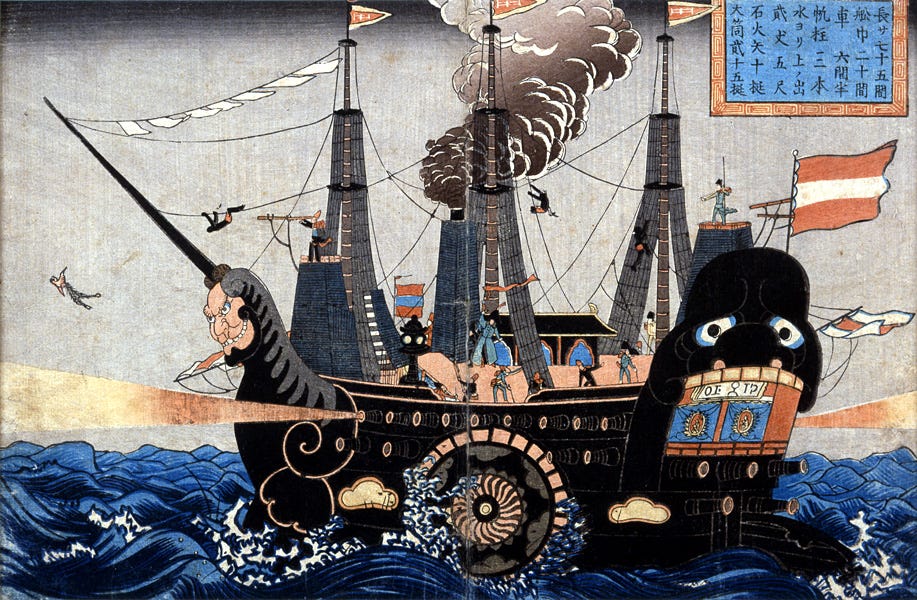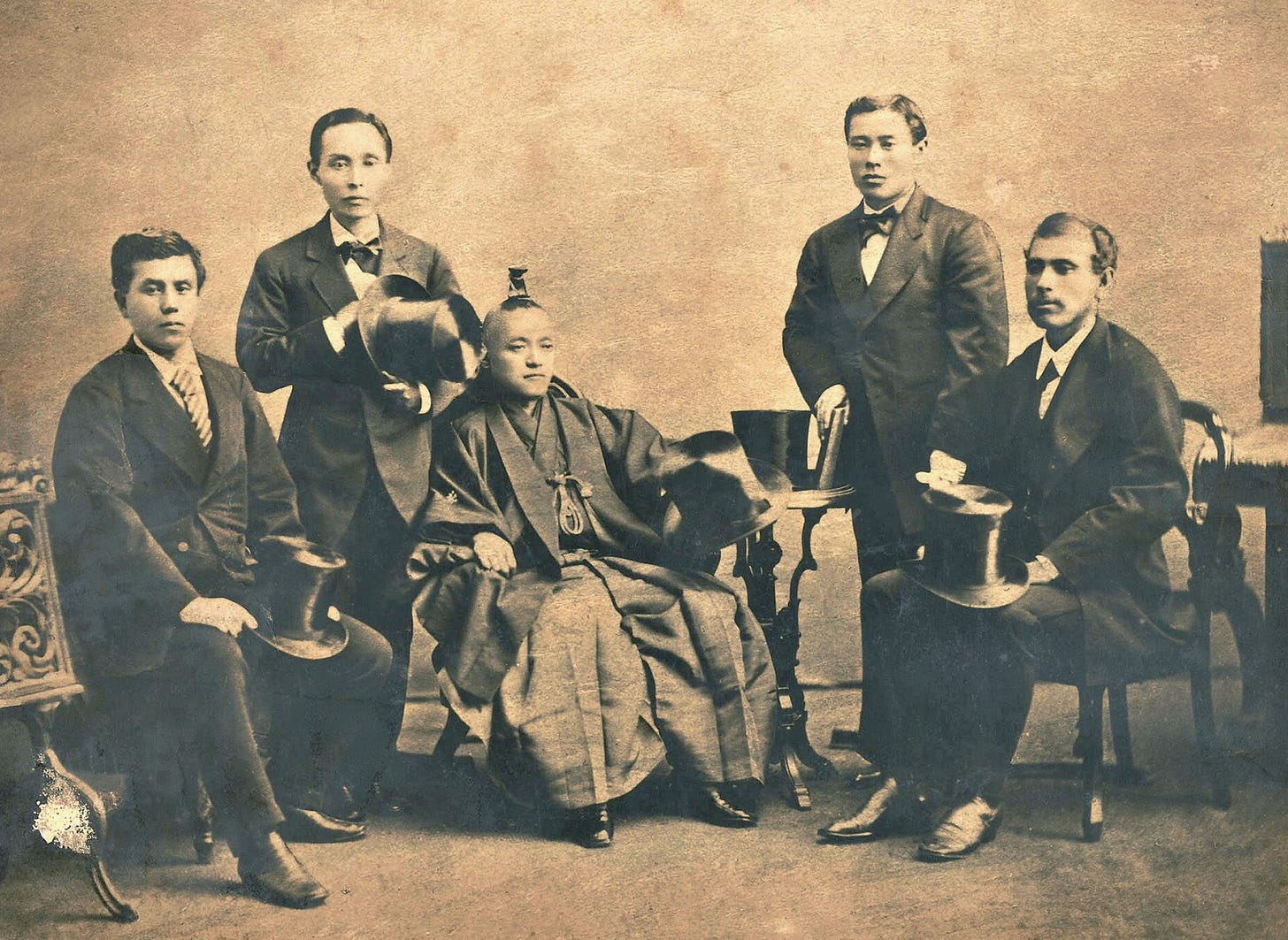The mid-nineteenth century was a moment of crisis for East Asia. For millennia, China had been the political and cultural powerhouse of the region. But now it was falling prey to European powers seeking trade and influence.
China’s loss ended up being Japan’s gain. When the United States came calling in 1853, Japan’s leaders had only to look across the water to mainland China, to see what not to do. Don’t simply shoo these westerners away. Don’t carry on as if the world hasn’t changed - because it has. Anyone looking at out to sea at the hulking and heavily-armed steamships of the US Navy could see that.
One of the US Navy’s steamships, courtesy of an anonymous artist in Nagasaki (c. 1854)
Japan’s response to all this wasn’t smooth. There was deep disagreement, which briefly turned violent in a civil war fought in 1868-9. But a handful of young men rose to become founding fathers of a new, modern nation. They borrowed and innovated at speed, conducting one of history’s greatest national overhauls.
The result? Within a generation, Japan was Asia’s most advanced nation and one of the world’s great powers.
This extraordinary period in Japan’s history is known as the ‘Meiji Restoration.’ I spoke about it on the History Snapshots podcast this week. Enjoy!
Founding Fathers: from left to right, Kido Takayoshi, Yamaguchi Masuka, Iwakura Tomomi, Itō Hirobumi and Ōkubo Toshimichi. The photo was taken in San Francisco in 1872, while they were on a fact-finding tour of the world.
If you’re enjoying my newsletter, please consider sharing this post. It helps me hugely, in growing the publication. Thank you!
—
Images:
Black Ship: ‘Visualising Cultures,’ Massachusetts Institute of Technology (fair use).
Japan’s Founding Fathers: Wikipedia (public domain).




